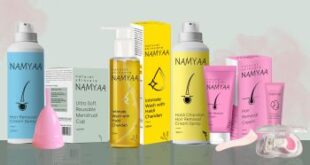The debate over lipstick continues, even though FDA has not found any evidence of lipsticks being harmful to health. It’s true that traces of lead were found in lipstick, but that was within safe limits. Lead is present in air, water and most other things and considered safe as long as it is within prescribed limits. In many countries, the upper limit for lead in cosmetics is 20 ppm (parts per million).
However, before you brush aside all talks about negative aspects of lipstick, it is important to remember that lead is not the only suspect here. There are various other chemicals in lipstick and examining the long-term effects of each one of these will be quite difficult. There are various other factors that can influence the outcome of using lipstick. To understand if your lipstick is killing you, here are some important things you need to know.
Quantum of use – Apart from lead, other traces of elements found in lipstick include cobalt, cadmium, copper, nickel, chromium, manganese, titanium and aluminum. Even if we assume that these are within safe limits, can anyone guarantee their safety in the long-term? That’s where it becomes necessary to keep a check on how much lipstick is being used every day. If you are retouching multiple times a day, it would be best to avoid such heavy usage. Toxins can accumulate in the body over a period of time, which is why you need to be careful about the amount of lipstick being used every day.
Known carcinogens – Chromium has been identified as a carcinogen. It has been linked with stomach and lung cancer. It can enter the body, either via swallowing or inhalation. Another carcinogen is cadmium, which has been linked to lung, kidney, prostate and pancreatic cancer. Of course, your lipstick is checked for levels of such carcinogens, but long-term impact is difficult to determine in an accurate manner.
Habit of licking – You may not be conscious about the lipstick being swallowed through licking. If you are retouching several times a day, you may end up swallowing a significant amount of lipstick on a daily basis. If you have such a habit, it would be better to be mindful of that henceforth. It will take some weeks of practice to avoid licking the lips while wearing lipstick.
Brand of lipstick – How safe are lipsticks will also depend on which brand of lipstick you use. Cheap ones that you get at flea markets are definitely to be avoided, as these may not be tested for presence of carcinogens and other toxins. You can probably approach the brand and ask them to provide some documentary evidence regarding safety of their product.
No one size fits all – Just because someone you know may be using a particular brand of lipstick for years, does not mean that it is certified safe. Impact of exposure to harmful chemicals will vary based on various factors such as genetics, age, weight, overall health, etc. That’s why you need to shun the one-size-fits-all approach. You need to learn from experience and probably do some research to know which brand of lipstick will be best for you and safe as well.
 Newspatrolling.com News cum Content Syndication Portal Online
Newspatrolling.com News cum Content Syndication Portal Online






